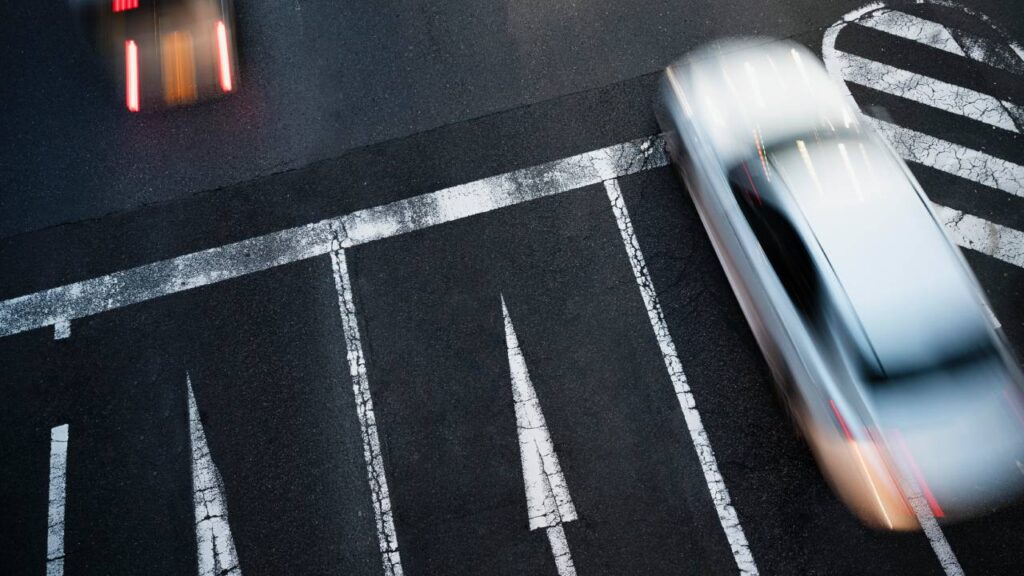Driving Courses in Edmonton
What’s the Big Deal About Changing Lanes?
Lane changes happen constantly. Whether you’re merging onto the Whitemud, navigating Whyte Avenue, or switching lanes on a quiet residential street, how you change lanes affects your safety, Confidence, and how others respond to you. Surprisingly, it’s one of the most misunderstood parts of everyday driving—especially for new drivers.
Most mistakes behind the wheel don’t stem from a lack of effort—they result from missing foundational habits. That’s where Driving Courses in Edmonton play a role. These courses help new drivers understand that changing lanes isn’t just about moving left or right; it’s about reading the road, timing your move, and executing it without creating unnecessary risk.
Why Lane Changing Matters for New Drivers
Many collisions and near-misses happen during poorly timed or rushed lane changes. The issue isn’t usually a lack of intent—it’s often about hesitation, unclear signals, or failing to check blind spots.
During Driving Courses in Edmonton, instructors spend time breaking down this everyday action into teachable steps. Through guided practice, students develop habits that enable them to navigate both calm and chaotic traffic patterns. Mastering this single skill can prevent many of the most common errors new drivers face during their road test—and more importantly, in real life.
How Driving Courses in Edmonton Approach Lane Changing
Unlike quick tips you might find online or rushed practice with a friend, Driving Courses in Edmonton offer a layered approach. We don’t just tell you what to do—we give you time to understand why each step matters and how to repeat it consistently. Students practise on different types of roads, with varying levels of traffic, weather, and distractions—just like they’ll face once licensed.
Let’s examine seven core lane-changing tips that are taught and reinforced during these courses.
1. Check Mirrors — But Don’t Depend on Them Alone
Instructors teach that a glance at your rear-view and side mirrors gives only part of the picture. These mirrors are great for general awareness, but often hide vehicles in the blind spot. Driving Courses in Edmonton emphasize combining mirror checks with other habits to get the full view of your surroundings.
2. Shoulder Check: Your Missing Piece of Vision
Before every lane change, a shoulder check ensures nothing’s hiding beside you—like a cyclist or a speeding vehicle. A quick look over your shoulder might seem small, but skipping it is a common mistake during road tests and real-world driving. Courses in Edmonton drill this into muscle memory early on.
3. Signal Early—Give Drivers Time to React
If you signal too late, you leave other drivers guessing—and that’s a risk. Courses emphasize the importance of indicating at least three to five seconds before shifting lanes. This isn’t just about rules; it’s about giving people space to understand your movement and respond calmly and thoughtfully.
4. Look Ahead—Not Just Beside You
A standard beginner error is focusing only on the lane you’re moving into. But what’s ahead? Is there stopped traffic, construction, or a slow driver? Driving Courses in Edmonton train students to scan the lane ahead before making a commitment. Avoiding last-second corrections starts with better forward awareness.
5. Stay Consistent With Speed
Sudden slowing down or speeding up while switching lanes creates uncertainty for others. Instructors guide students to maintain a steady speed through the lane change—unless conditions demand otherwise. That stability makes your vehicle more predictable, and predictability keeps you safer.
6. Don’t Force a Gap—Judge It Smartly
Courses help learners understand traffic spacing and flow. A tight gap may look tempting, but if it causes someone to brake or swerve, it’s too close. Instead of forcing the issue, learners practise waiting for natural gaps, timing their signal, and merging when it’s smooth and respectful.
7. Finish Clean—And Cancel Your Signal
Once the move is complete, cancel your signal. It’s a small detail that often gets overlooked when a learner is focused on multiple tasks simultaneously. Driving schools in Edmonton include this in their checklists so that it becomes part of every lane change, not an afterthought.
What You Build by Practicing Lane Changes the Right Way
Every tip above does more than just help you pass your road test—it gives you tools to read the road, make safer choices, and feel more at ease in traffic. Repeated practice during Driving Courses in Edmonton turns awkward first attempts into fluid habits. These programs go beyond technical skills—they also help new drivers stay calm under pressure and learn to assess risk more accurately.
Driving schools structure their lessons so that each student can practise in low-pressure environments first, then gradually work their way into more complex traffic scenarios. That’s how Confidence is built—by repeating the proper habits until they stick.
Moving Forward
Lane changing may seem like a basic task, but it’s a crucial part of becoming a capable and alert driver. Whether you’re new to driving or preparing for your road test, choosing the proper training can significantly impact your long-term Confidence on the road.
To learn these techniques through real-time instruction and practice, Driving Courses in Edmonton offer structured learning that prioritizes safety and skill development. For learners ready to take the next step, LeaP Driving School provides a practical path to develop reliable habits from the start.

